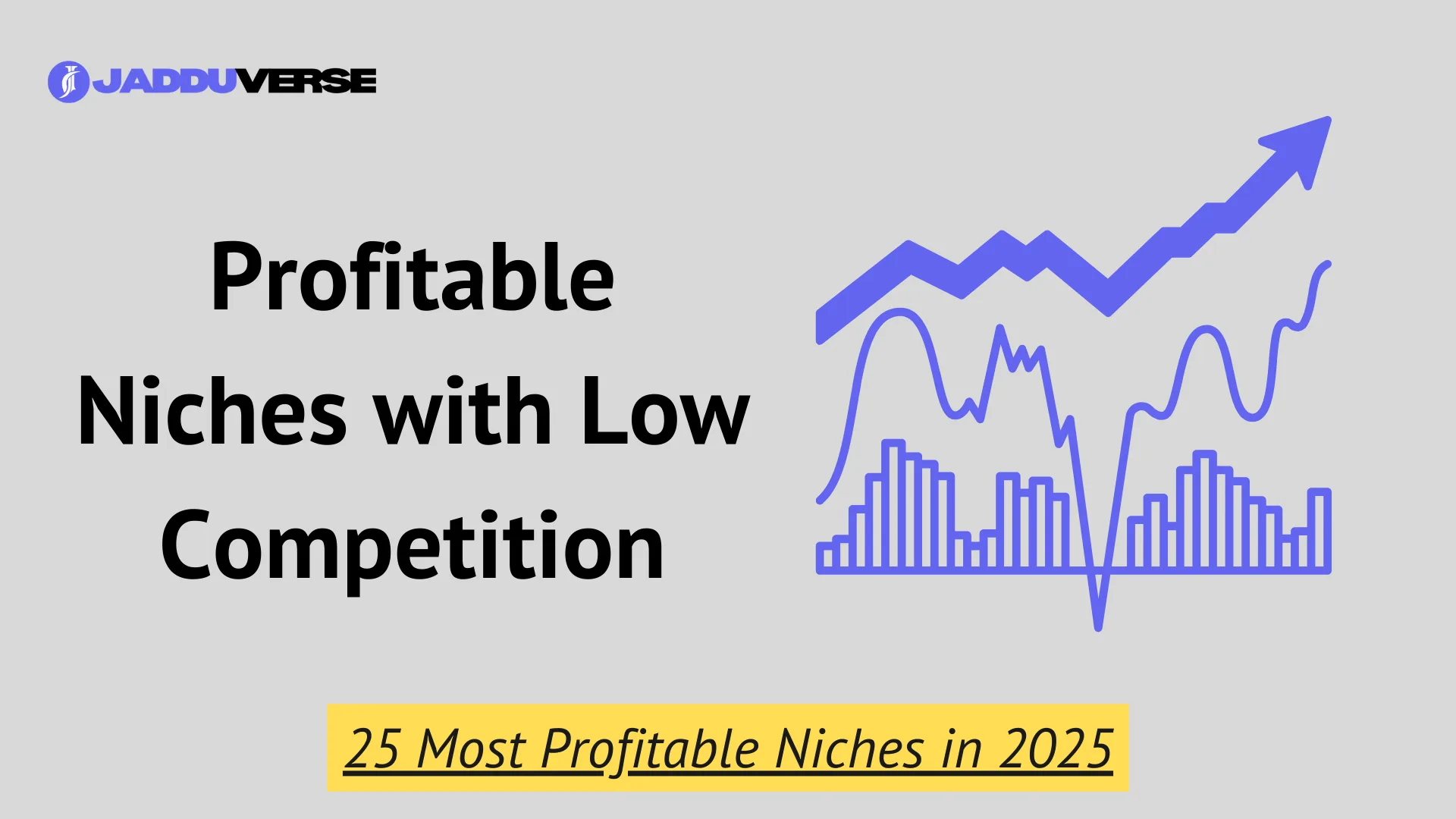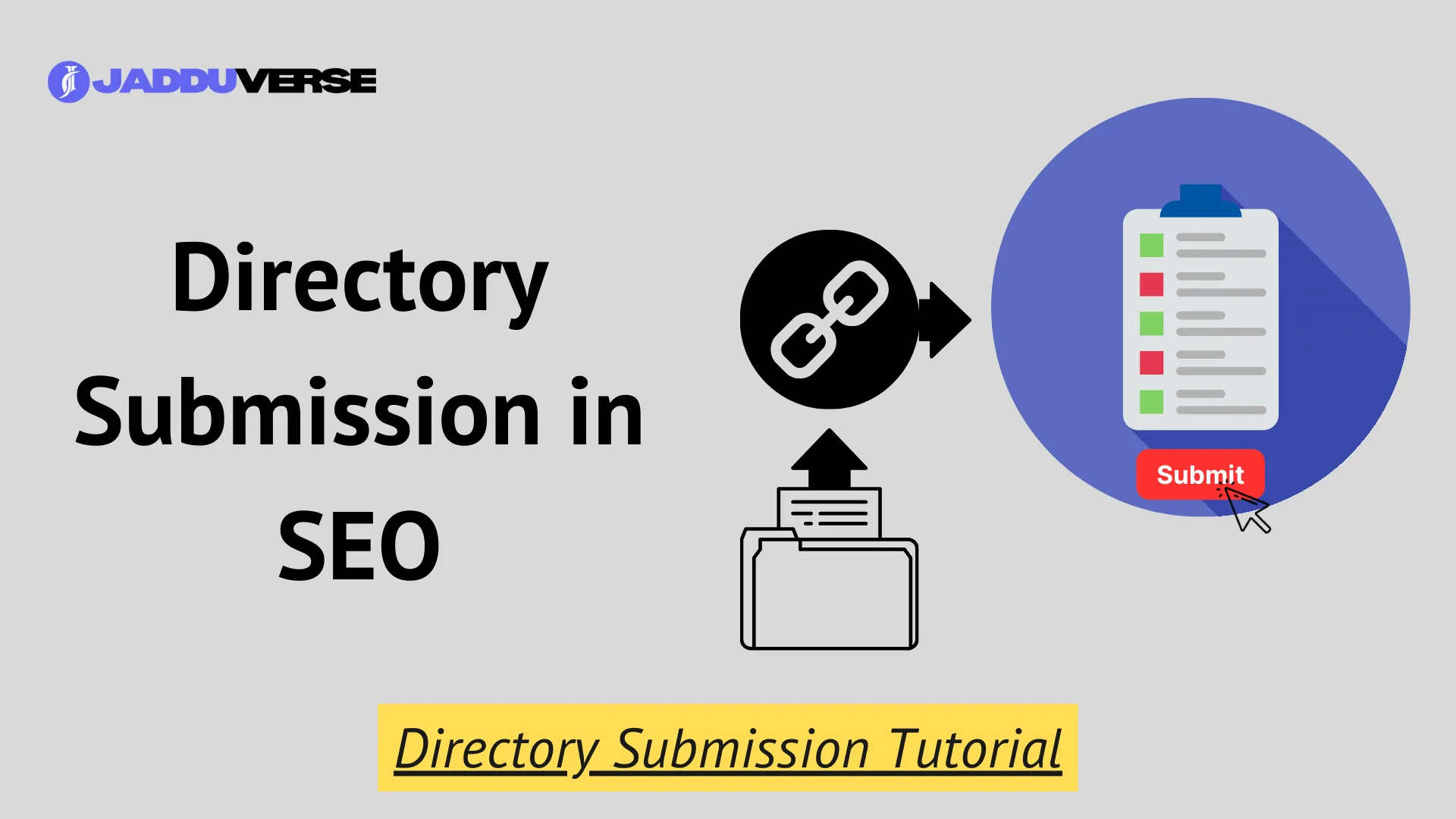It is essential to know where to include geomods for local SEO in blogs if you want your blog to rank at the top in local SERP.
Geomods, or you can say geographic modifiers, are simple location-based keywords.
Page Contents
ToggleUsing them perfectly can make search engines match your blog with people searching for services or information in specific areas or parts.
For example, if you include geomods in places like your title, headings, and meta description then it will help improve visibility for local audiences or your targeted location. It will also make your content more relevant to users nearby or your targeted locations.
Likewise, remember that it is not just about adding location terms everywhere but also about using them in a natural, meaningful way. This guide will show you the best places to use geomods so your blog can rank higher and attract the right audience.
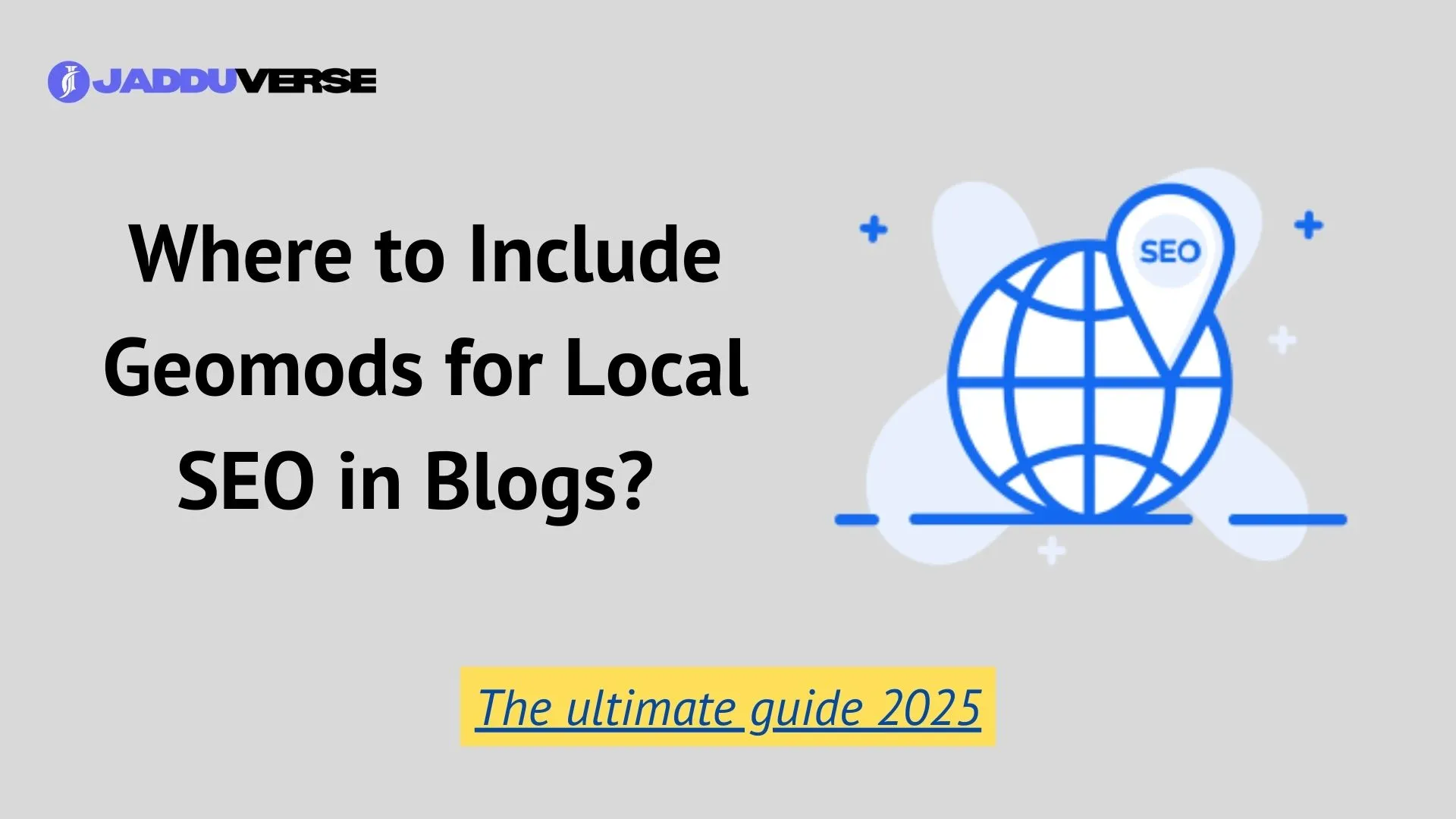
Where to Include Geomods for Local SEO in Blogs?
The key to success in Local SEO is knowing exactly where to include geomods in your blog posts. Below, we will explore and learn the key areas where geomods should be added to maximize their impact in any blog.
1. Blog Post Title
The title of a blog post is one of the most important places to include geomods. The title tells both search engines and readers what your blog post is about. Adding your geomod here makes it clear which geographic area the content is targeting.
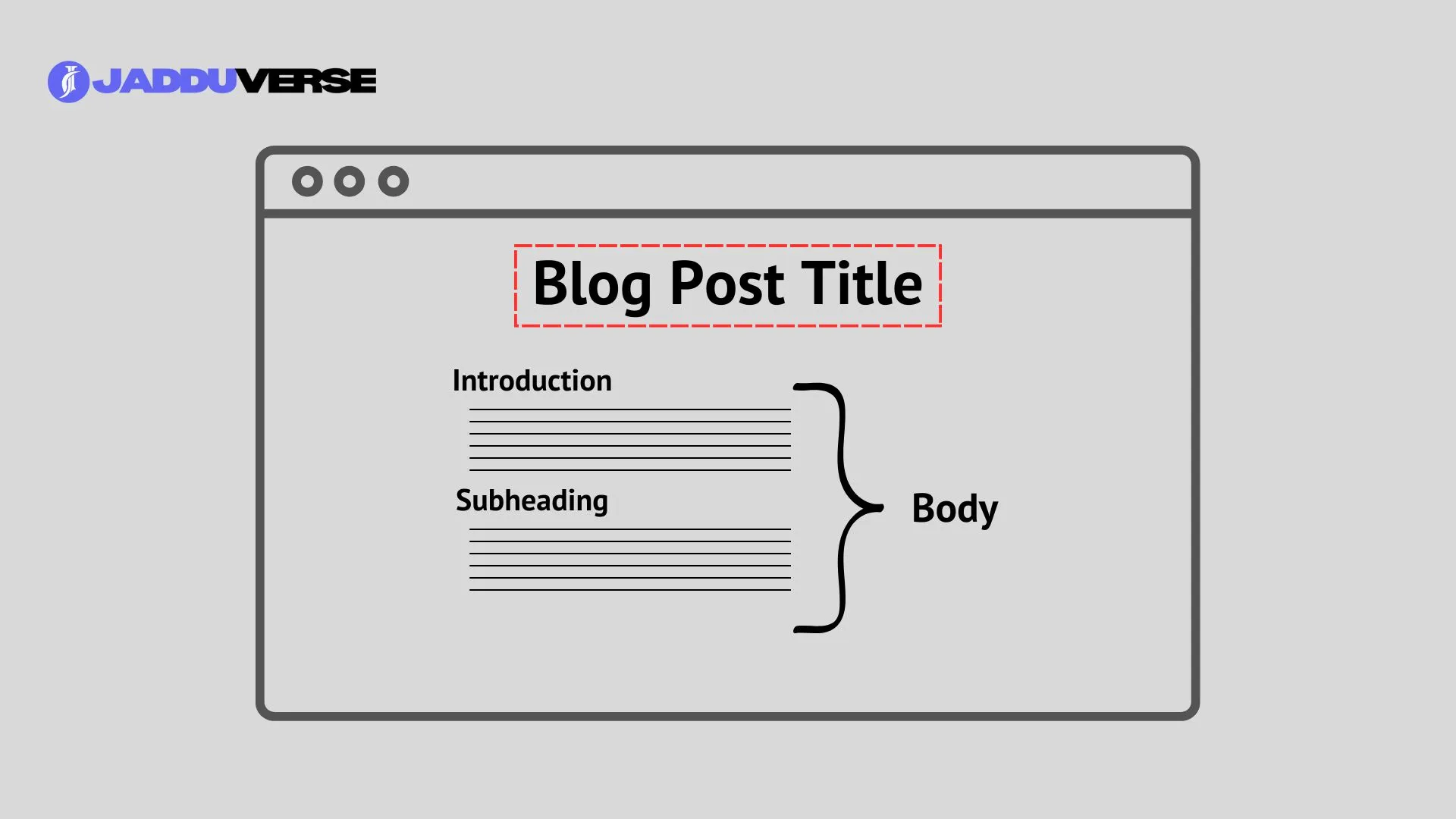
For example, if you are writing about restaurants in Ahmedabad, a title like “Top 5 Restaurants in Ahmedabad You Must Try” would work well.
Including the geomod in the title also helps increase the chances of your blog post appearing when someone searches for the terms related to that location. Make sure that the geomod fits naturally into the title to avoid making it sound awkward.
2. Headings and Subheadings
Headings and subheadings not only organize your blog post but also serve as opportunities to include geomods. Using them in a way that reflects the structure of any of your blog post and the local relevance of your content. For an instance, if your blog post has multiple sections, you can include geomods in headings like:
- “Why Ahmedabad Residents Love Local Restaurants?”
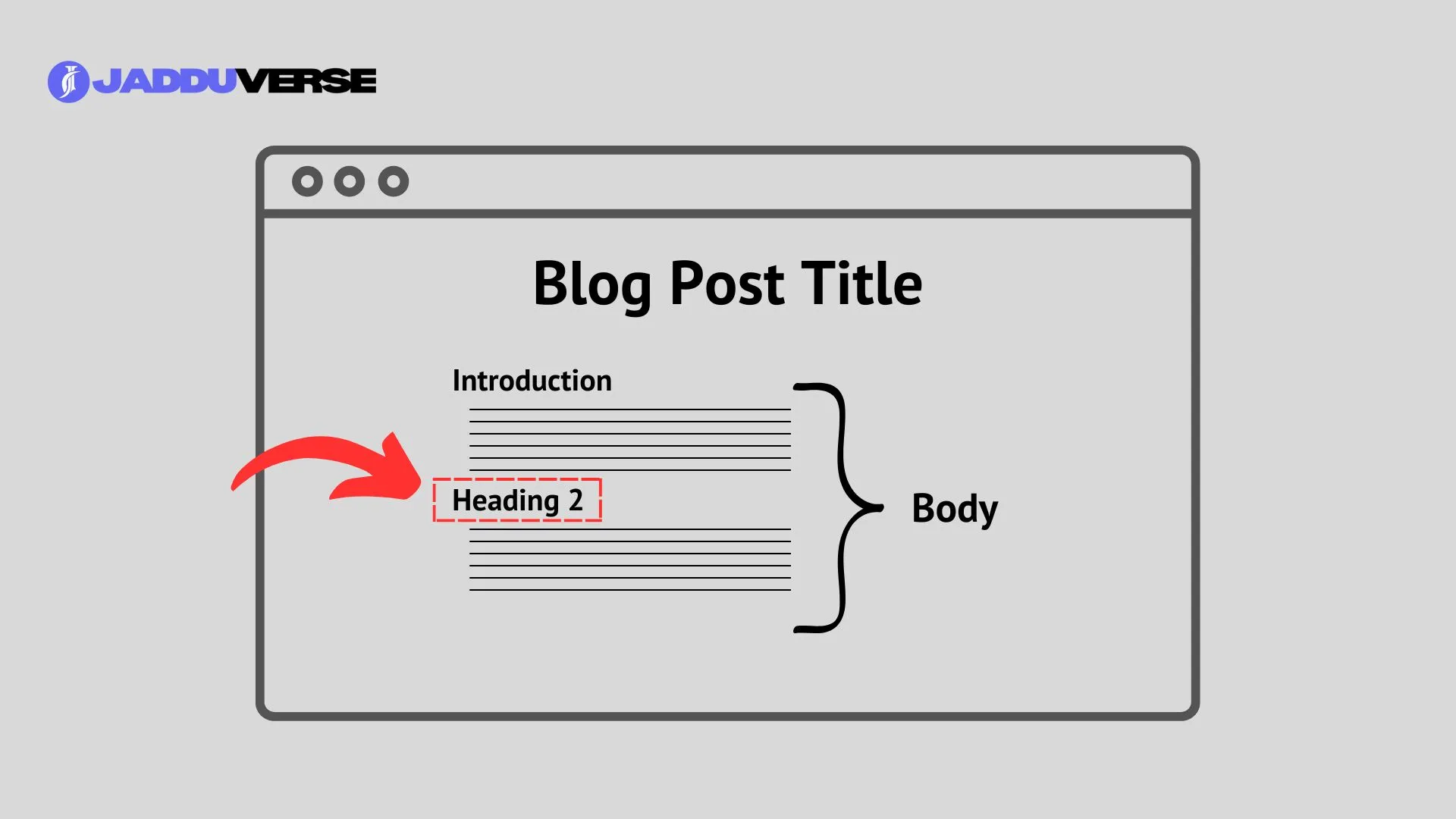
Search engines often prioritize the content with well-structured headings or subheadings, so using geomods here can boost your ranking for local searches.
3. Introduction
The introduction sets the tone for your blog post and gives readers an idea of what they can expect. It is a great place to include your main geomod because search engines tend to value content that uses keywords early on.
For example: “Are you looking for the best restaurants in Ahmedabad? In this guide, we’ll explore some of the most popular spots in the city.”
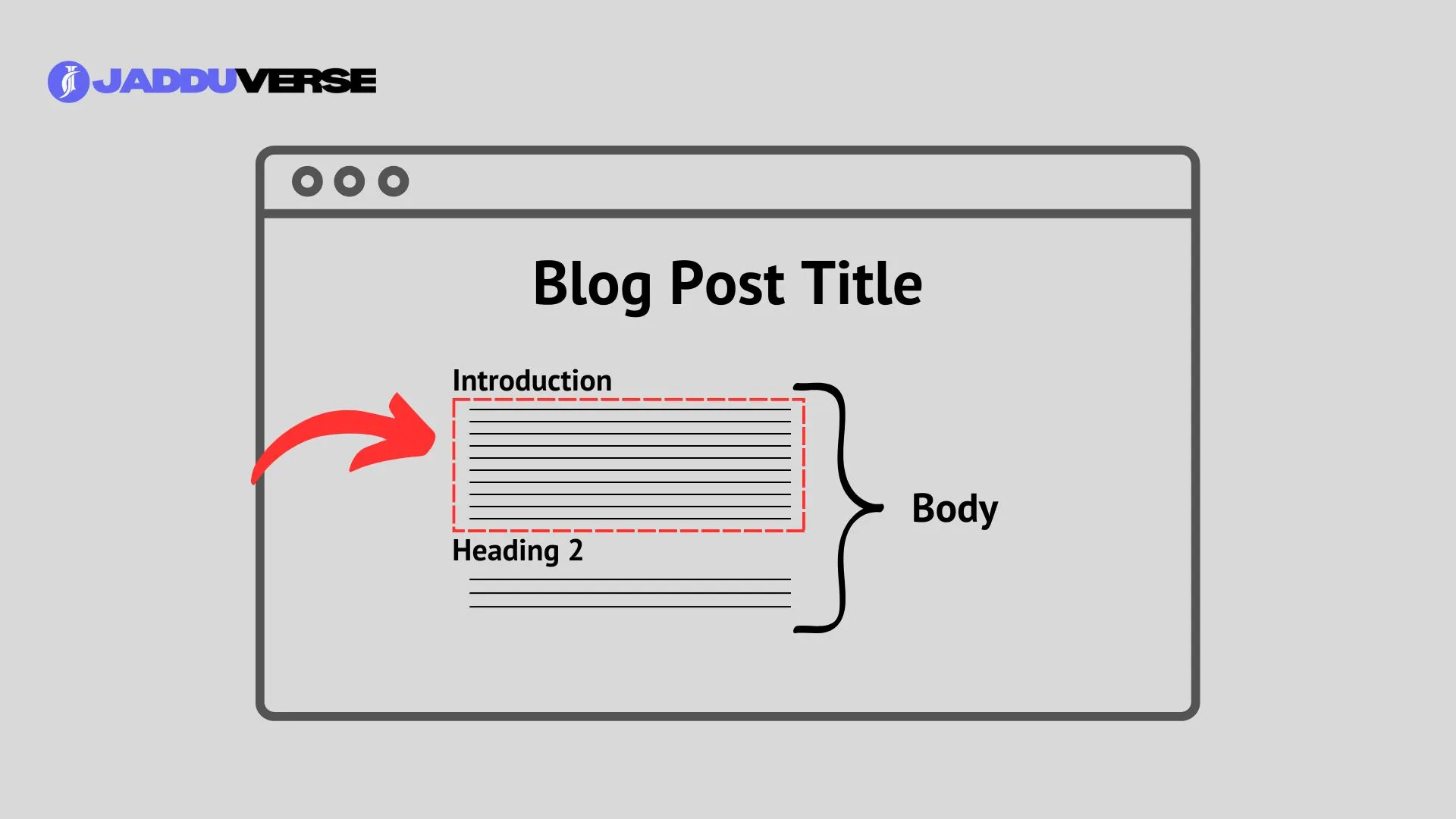
This is a very short overview or line of an introduction. You should create a proper more than 120 words brief introduction with geomods included in it.
Make sure the geomod fits naturally into the flow of your introduction without making it feel forced.
4. Meta Description
The meta description is a short summary of your blog post that appears below the title in search engine results. Including your geomod here can make your content more attractive to local users.
For example: “Discover the top restaurants in Ahmedabad with our detailed guide. Find out which spots locals love and why they stand out.”
For adding a perfect meta description, you can use a great SEO tool RankMath.
Using RankMath you’ll get a dialogue box to add your exact meta description you want to add in a single blog post in wordpress. You can see the below image to check exactly how it works.
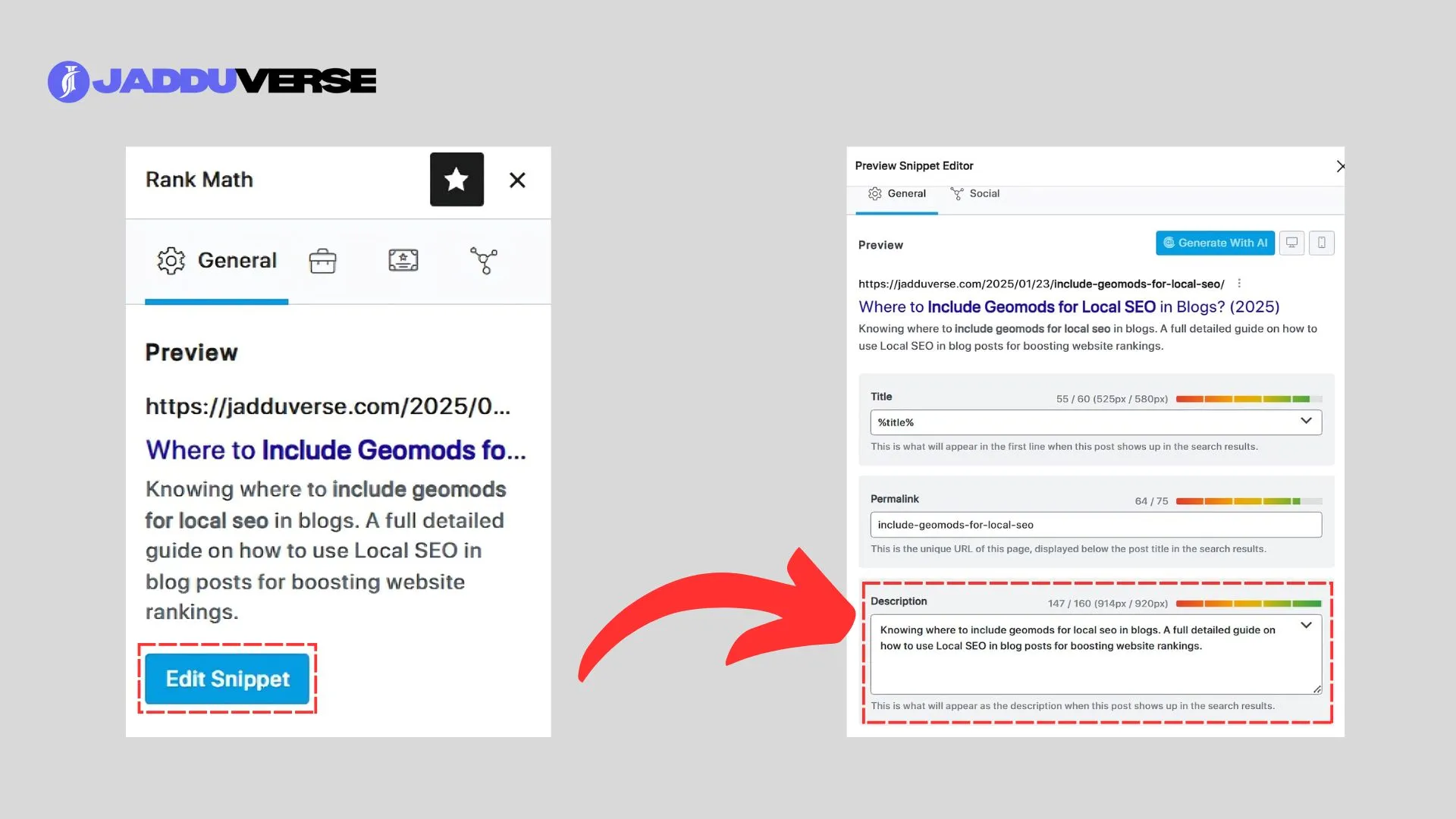
Since the meta description directly impacts click-through rates, adding geomods can make your blog post more likely to catch the attention of local searchers.
5. Body Content
The body content is where you can naturally integrate geomods throughout the blog post. Instead of stuffing geomods into every sentence, place them where they can add value and context.
For example:
- “Many Ahmedabad residents visit these restaurants for their freshly cooked goods.”
Using geomods naturally in sentences like these makes the content more engaging and relevant to local readers while helping search engines understand your focus area.
6. Image Alt Text and File Names
Images are a great way to make your blog post more visually appealing, but they can also help with local SEO. Adding geomods to image alt text and file names is a simple way to boost your blog’s relevance.
For example:
- Alt Text: “Freshly cooked khaman-dhokla at a restaurants in Ahmedabad.”
- File Name: “ahmedabad-restaurant-khaman-dhokla.jpg”

This practice helps search engines index your images for local searches, giving your blog post an extra boost.
7. URL Structure
Your blog post’s URL should also include the geomod to make it more relevant for local searches.
For example:
- Good URL: www.example.com/restaurants-in-ahmedabad
- Avoid: www.example.com/blog-post-10
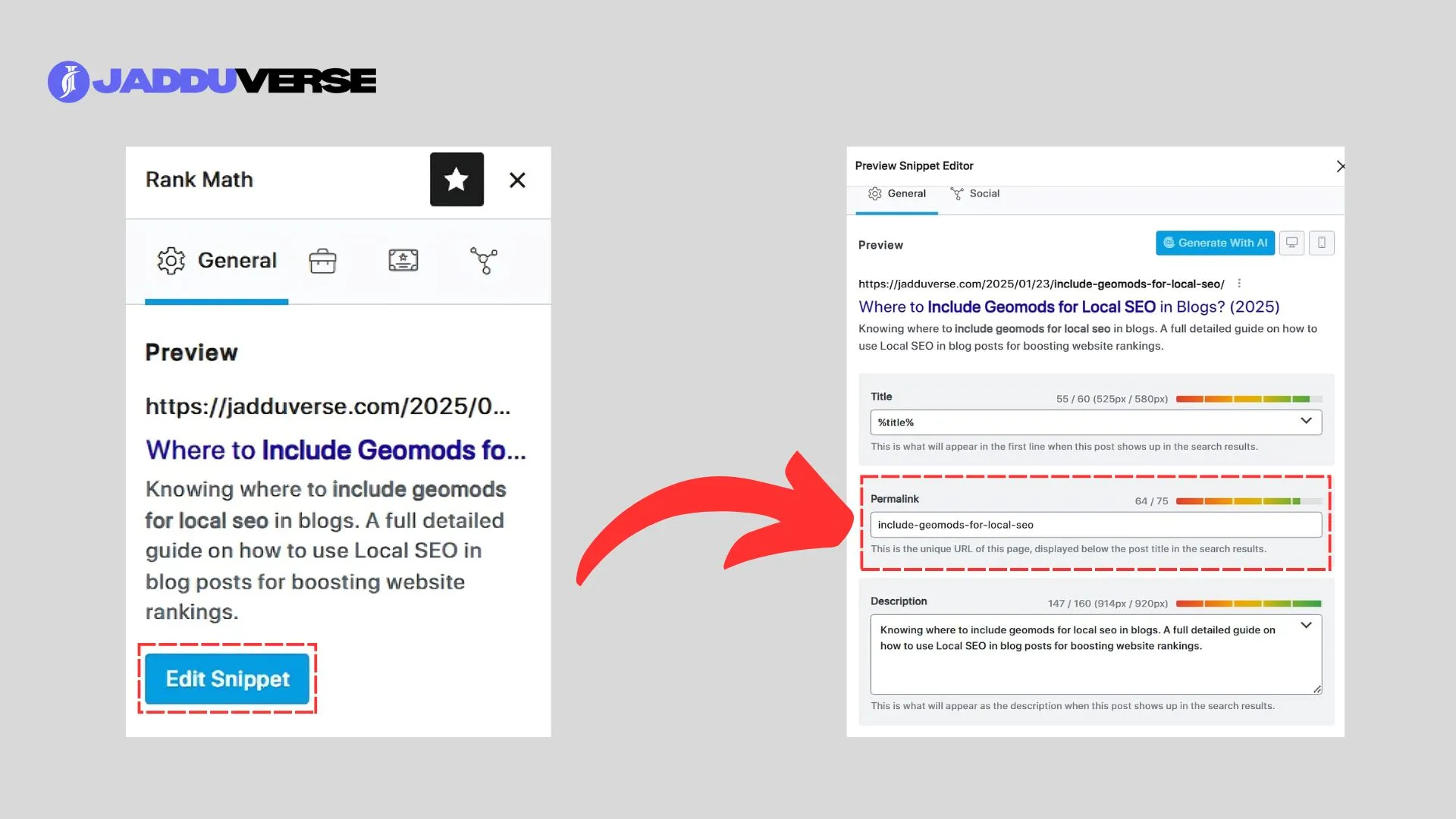
A clean and descriptive URL improves the chances of your blog post appearing in search results for local queries.
8. Anchor Text for Links
If your blog post contains internal or external links, you can use geomods in the anchor text to improve local SEO.
For example:
- “Check out our guide to the best cafes in Ahmedabad.”
- “Learn more about local food options in downtown Ahmedabad.”
Anchor text with geomods signals to search engines that the linked content is relevant to a specific location.
9. Adding Geomods in Conclusion
The conclusion is your last chance to make your blog post’s relevance to the target location. Summarizing the key points and including the geomod naturally is important.
For example: “If you’re in Ahmedabad and love freshly cooked goods, these restaurants are worth a visit. Use this guide to find the best options near you.”
This leaves a lasting impression on readers and improves the blog post’s local relevance.
Best Practices for Using Geomods in Blogs
We saw where to include geomods for local seo in blogs. But, do you know what are the best practices that the experts or professional bloggers do? The below are the key points which every professional bloggers work on, for ranking in Local SEO geomods.
1. Combine Geomods with Related Keywords
Incorporating related keywords along with geomods can enhance the SEO value of your blog post. For example, if your main keyword is “best coffee shops in ahmedabad”, related keywords could include:
- “local coffee shops in ahmedabad”
- “ahmedabad cafes”
- “coffee near me in ahmedabad”
Using these variations can make your blog post more effective and helps it to rank for multiple search queries.
2. Focus on User Intent
When using geomods, always prioritize the needs of your audience. Think about what local users are searching for and optimize your content to provide helpful answers.
For example, if you’re writing about gyms in ahmedabad, focus on details like pricing, facilities, and locations. This will make your content more useful and increases its chances of ranking higher.
3. Avoid Irrelevant Geomods
Adding unrelated or inaccurate geomods can confuse readers and hurt your credibility. Ensure that the geomods you use are directly connected to the content.
This will also decrease the readability of your content and will make your blog lose audience.
For example, if you’re writing about “hotels in ahmedabad” don’t mention other cities just to include extra geomods.
4. Track Performance and Update Content
SEO is an ongoing process, and the same applies to using geomods. Use tools like Google Analytics and Google Search Console to track the performance of your blog.
If certain geomods are underperforming, consider updating the content to better match local search trends.
5. Write for People, Not Just Search Engines
While geomods are essential for SEO, your primary focus should always be on creating content that is easy to read and valuable to your audience.
Avoid forcing geomods into every sentence. Instead, write naturally and ensure the content flows well.
6. Stay Updated on Local SEO Trends
The rules of SEO change over time, and it’s important to stay informed about the latest trends.
This includes keeping track of how search engines like Google handle local searches and updating your strategy accordingly.
FAQs
1. How do I use geomods without keyword stuffing?
To avoid keyword stuffing, use geomods naturally within the content. Instead of repeating the same geomod multiple times, vary the phrasing and use related keywords.
For example, instead of saying “restaurants in ahmedabad” repeatedly, you could use “dining options in ahmedabad” or “best places to eat in ahmedabad.”
2. Can I use multiple geomods in a single blog post?
Yes, you can use multiple geomods if your content covers more than one location.
For example, if your blog compares gyms in ahmedabad and gandhinagar, you can include both “ahmedabad” and “gandhinagar” as geomods. Make sure the content is relevant to each location to avoid confusion.
3. Do I need to update geomods in old blog posts?
Yes, updating geomods in older blog posts can help improve their relevance for local searches.
If local search trends or keywords have changed, revising your content to include updated geomods can boost its performance.
4. Are geomods helpful for all types of blogs?
Geomods are especially useful for blogs targeting local audiences or businesses. If your content is about a specific location or service area, using geomods can significantly improve its visibility.
However, if your blog targets a global audience, geomods may not be as effective.
Conclusion
Using geomods for local SEO in blogs is a smart and effective way to connect with local audiences and improve your blog’s visibility in search results.
By including geographic modifiers in important areas like titles, headings, meta descriptions, and body content, you make it easier for search engines and readers to identify the location your blog targets.
Remember to use geomods naturally to avoid keyword stuffing, and consider adding related terms like “local SEO strategies” or “location-based keywords” to broaden your reach.
Optimizing images with geomods and updating old blog posts to match current local search trends can also strengthen your SEO efforts.
The key is to balance SEO optimization with reader-friendly content. By focusing on creating high-quality, locally relevant blogs, you can improve your rankings and attract the audience you want.
Start implementing these tips today and watch your local SEO results improve.


